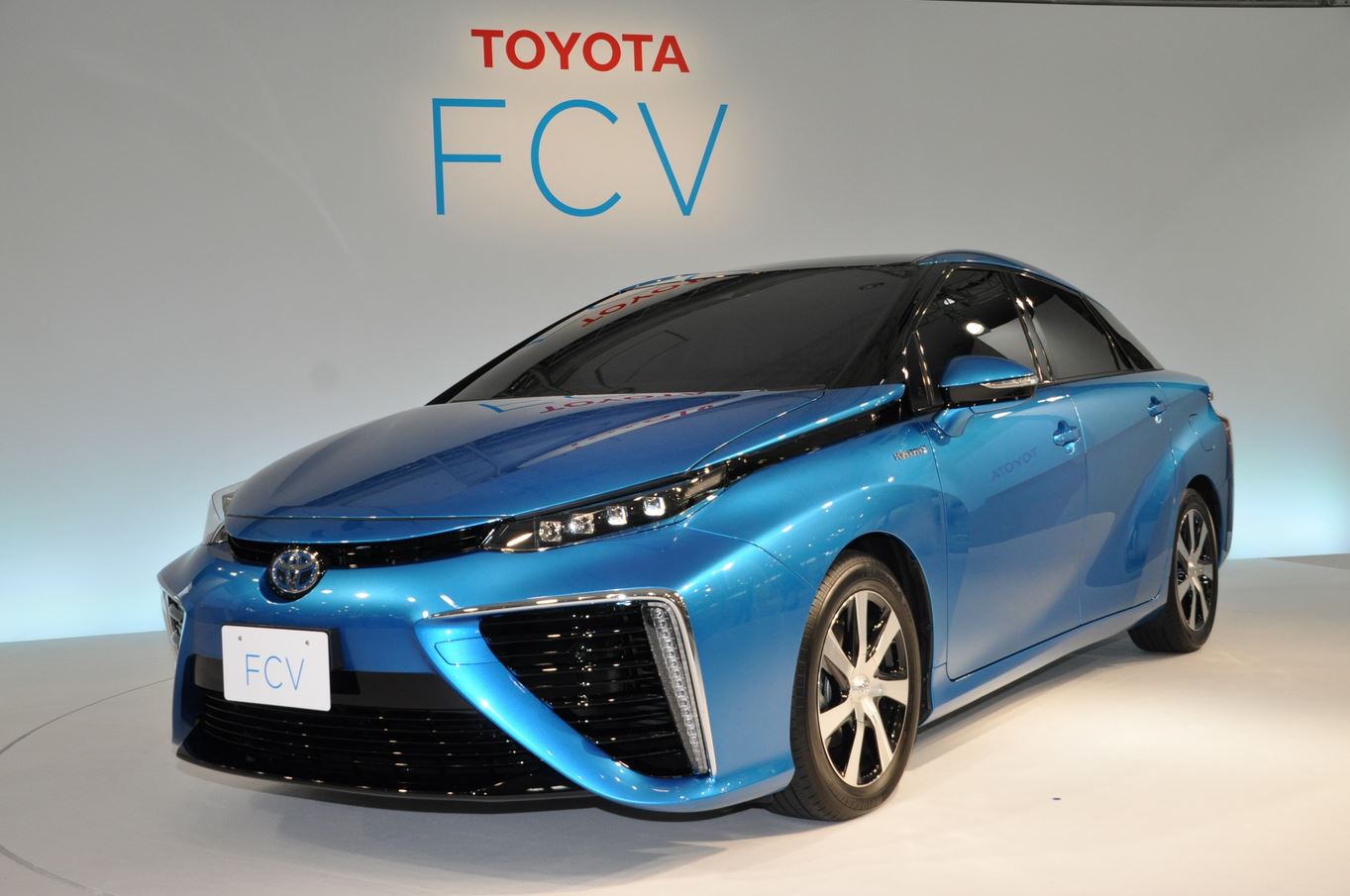Toyota is on its forefront with the fuel cell vehicle ‘FCV’ as an initial step towards the realization of a hydrogen society.
2014 is an important year when Toyota caused a sensation by presenting their new model of a fuel cell sedan, which is available to the public. In independent testing of various companies and brands in green technology and alternative fuel vehicles, Toyota has once again established new benchmarks with the Mirai.
It is a bold move towards sustainable mobility but could also be the biggest con depending on the market acceptance of the vehicle.
The Mirai launch proved an ideal way to show the world that Toyota is ready to push for sustainable mobility solutions. Where all other automakers were concentrating on hybrids and purely electrical automobiles, Toyota was expanding its field with the hydrogen fuel cell technology. Mirai is a car that uses hydrogen as its fuel and this when ignited with oxygen from the air produces electricity that is required to power the car. The only byproduct given off is water vapour, thus the vehicle can be described as zero-emission.
Their vision and mission highlighted Toyota’s commitment to be environmentally friendly in the nearest future. It represents their desire to tackle the societal problems through the use of technology in designing the Mirai fuel cell sedan. Other car companies seemed to be merely following this trend.
This is a new vehicle that comes with an ultra-modern design that is fully equipped with the latest technology.
Overall, as for myself, I believe the Mirai exterior design represents the Japanese automaker’s innovative fuel cell powertrain. The unified body, without any unnecessary curves, and sharp angles define the car and its design as unmistakably modern. Also, the interior type is as avant-garde as the exterior, the car is packed with many pieces of high-tech equipment, and the design is free from any kind of excessive decorations.
Actually, Toyota achieved a perfect balance here between the look and the practicality of the product. The Mirai did not go unnoticed upon its debut as it attracted general attention as a new car model. The car could not be mistaken for any other regular sedan at first glance.
Another achievement in the master plan of Toyota was the construction of the first hydrogen refueling station. They wanted to more of hydrogen stations so that there is a higher take up of fuel cell automobiles.
The products include the driving range and the refueling experience.
This model’s fuel tank can hold hydrogen and it has an EPA-estimated range of over 300 miles. It is not as extensive as some of the other best gas-powered cars but will suffice the needs of most drivers. Refuelling also lasts about five minutes and this is a lot quicker than charging an electric car battery as well.
Although, the Mirai’s range is suitable for local and regional traveling, I could envision myself being okay with it. The frequent but brief refueling would also entail a short duration of road trip pit stops. From the case, Toyota seemed to manage all these aspects very effectively.
Toyota plays hydrogen card, opens the door to a new future
The bar should go to Toyota for assembling a fuel cell car when few automakers dare or have the technology to do so. Mirai’s debut is an industry-first, opening up a hydrogen era in the automotive industry. With Toyota’s support and access to markets, they can help increase the use of this kind of technology.
To my mind, the Mirai is just a beginning of a much larger and grander Hydrogen Society plan. In addition, Toyota has plans to use fuel cells not only in cars but in houses, offices, and neighborhoods too. If any company today is capable of achieving this feat, it is Toyota, a company that has proven time and again that it is nothing if not equal to the task. I can see the Mirai on the road now and what more will Toyota do with fuel cell technology in the future!
Here is a brief promotional video from Toyota.

















